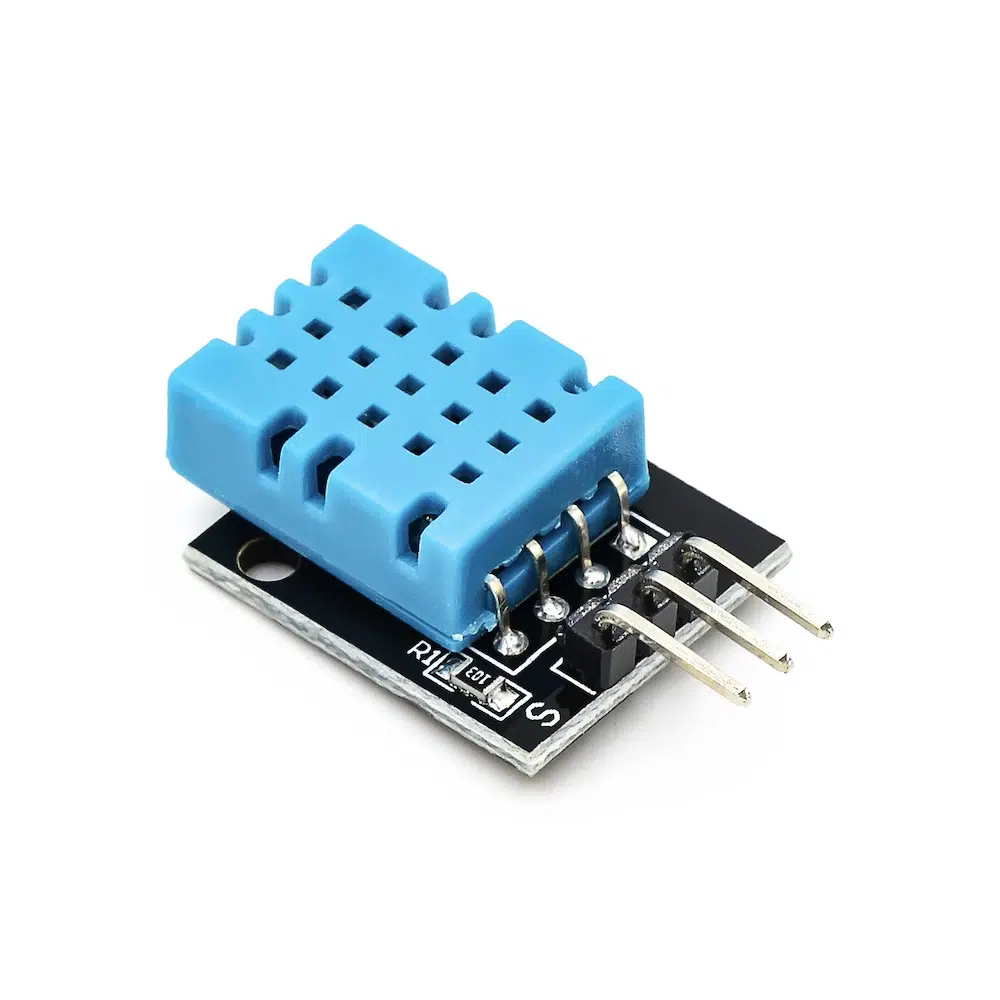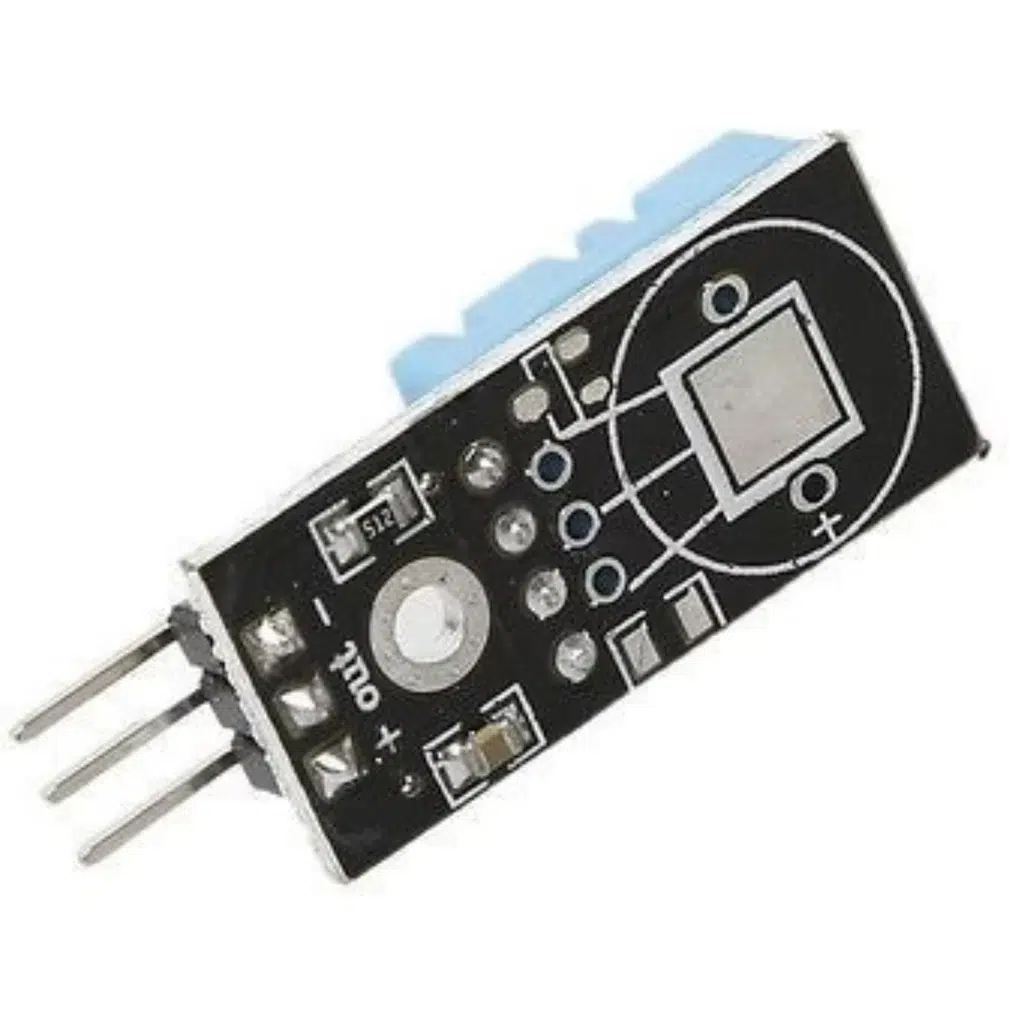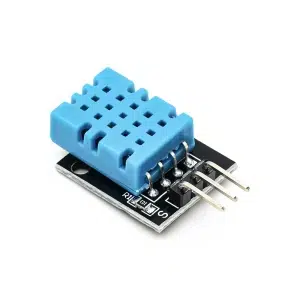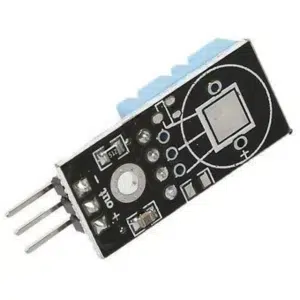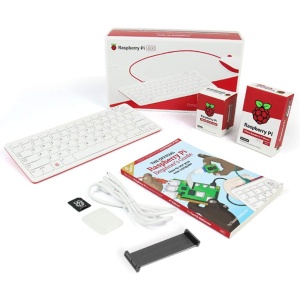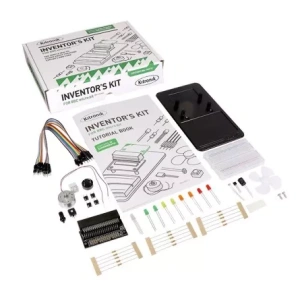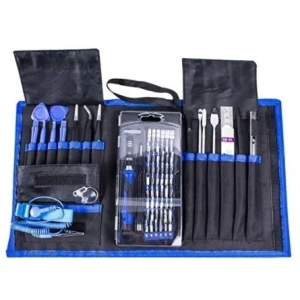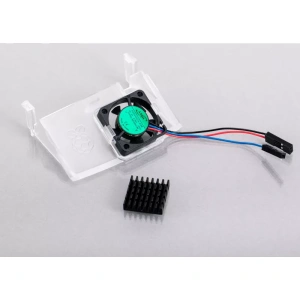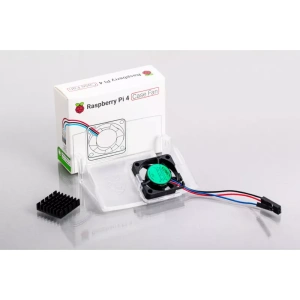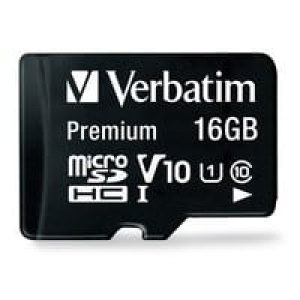Need help? Call us:
+356 27443236
KY-015 DHT11 Temperature and Humidity Sensor Module
Only 1 left in stock
Estimated Delivery Time: Within 24 hours
Have any Questions?
Feel free to Get in touch
The KY-015 Temperature and Humidity Sensor module provides a digital serial interface to measure environment humidity and temperature. Compatible with various microcontrollers like Arduino, Raspberry Pi and ESP32.

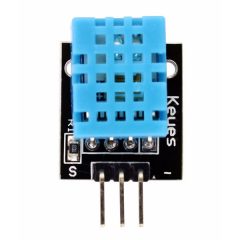
KY-015 SPECIFICATIONS
This module consist of a DHT11 digital humidity and temperature sensor, a 1 kΩ resistor and 3 male header pins. The DHT11 uses an internal thermistor and a capacitive humidity sensor to determine the surrounding conditions, an internal chip is responsible for converting the readings to a serial digital signal.
| Operating Voltage | 3.3V to 5.5V |
| Humidity measurement range | 20% to 90% RH |
| Humidity measurement accuracy | ±5% RH |
| Humidity measurement resolution | 1% RH |
| Temperature measurement range | 0ºC to 50ºC [32ºF to 122ºF] |
| Temperature measurement accuracy | ±2ºC |
| Temperature measurement resolution | 1ºC |
| Signal transmission range | 20m |
CONNECTION DIAGRAM
Connect the Power line (middle) and ground (-) to +5 and GND respectively. Connect signal (S) to pin 8 on the Arduino.
| KY-015 | Arduino |
|---|---|
| S | Pin 8 |
| middle | +5V |
| – | GND |
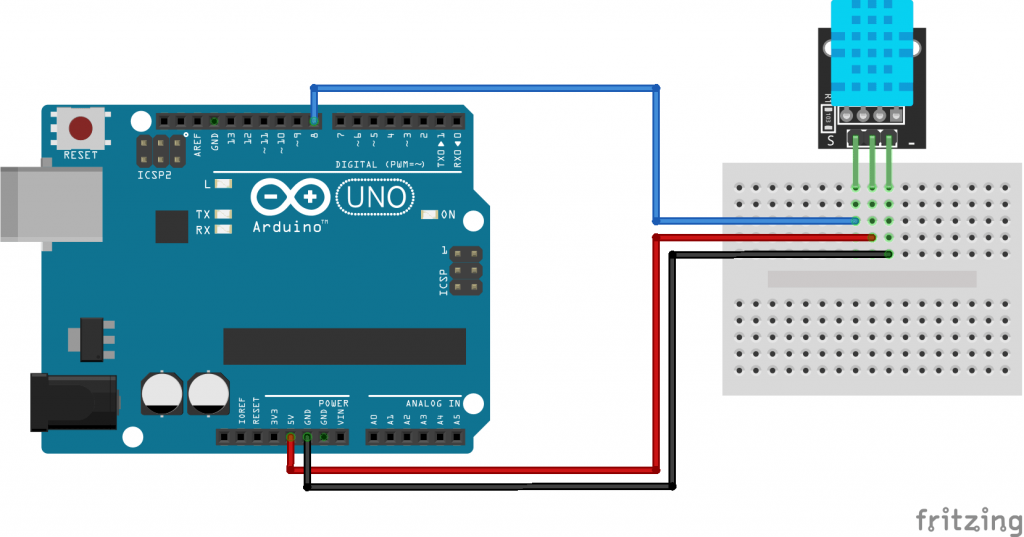
KY-015 ARDUINO CODE
The following sketch uses pin 8 on the Arduino to serially send and receive data from the KY-015 sensor. Serial communication is archived by sending specific series of high/low signals to the sensor and waiting for a response. Temperature and humidity data is read bit by bit and returned as an array of bytes.
int DHpin = 8; // input/output pin
byte dat[5];
byte read_data()
{
byte i = 0;
byte result = 0;
for (i = 0; i < 8; i++) {
while (digitalRead(DHpin) == LOW); // wait 50us
delayMicroseconds(30); //The duration of the high level is judged to determine whether the data is '0' or '1'
if (digitalRead(DHpin) == HIGH)
result |= (1 << (8 - i)); //High in the former, low in the post
while (digitalRead(DHpin) == HIGH); //Data '1', waiting for the next bit of reception
}
return result;
}
void start_test()
{
digitalWrite(DHpin, LOW); //Pull down the bus to send the start signal
delay(30); //The delay is greater than 18 ms so that DHT 11 can detect the start signal
digitalWrite(DHpin, HIGH);
delayMicroseconds(40); //Wait for DHT11 to respond
pinMode(DHpin, INPUT);
while(digitalRead(DHpin) == HIGH);
delayMicroseconds(80); //The DHT11 responds by pulling the bus low for 80us;
if(digitalRead(DHpin) == LOW)
delayMicroseconds(80); //DHT11 pulled up after the bus 80us to start sending data;
for(int i = 0; i < 5; i++) //Receiving temperature and humidity data, check bits are not considered;
dat[i] = read_data();
pinMode(DHpin, OUTPUT);
digitalWrite(DHpin, HIGH); //After the completion of a release of data bus, waiting for the host to start the next signal
}
void setup()
{
Serial.begin(9600);
pinMode(DHpin, OUTPUT);
}
void loop()
{
start_test();
Serial.print("Humdity = ");
Serial.print(dat[0], DEC); //Displays the integer bits of humidity;
Serial.print('.');
Serial.print(dat[1], DEC); //Displays the decimal places of the humidity;
Serial.println('%');
Serial.print("Temperature = ");
Serial.print(dat[2], DEC); //Displays the integer bits of temperature;
Serial.print('.');
Serial.print(dat[3], DEC); //Displays the decimal places of the temperature;
Serial.println('C');
byte checksum = dat[0] + dat[1] + dat[2] + dat[3];
if (dat[4] != checksum)
Serial.println("-- Checksum Error!");
else
Serial.println("-- OK");
delay(1000);
}

